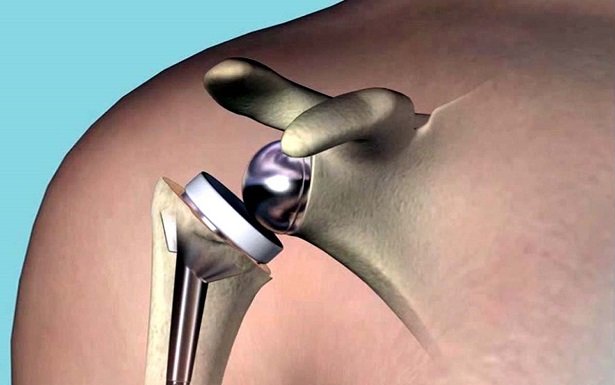
Dr. Sanjay Barik
Knee & Shoulder Surgeon
Reverse Shoulder Arthroplasty

What is Reverse Shoulder Arthroplasty
Reverse total shoulder replacement is a specialized procedure for shoulder surgery. In this operation, the surgeon removes the damaged components of the shoulder and substitutes them with artificial parts.
The shoulder joint comprises the upper arm bone (humerus) and the shoulder blade (scapula). The rounded end, known as the ball or humeral head, of the upper arm bone moves within a shallow socket in the shoulder blade. This unique structure allows for a wide range of motion in the shoulder. Additionally, cartilage, tendons, and ligaments surrounding the joint provide support and facilitate smooth movement.
What is the difference between a reverse and standard shoulder replacement?
In a reverse prosthesis, the key distinction lies in the placement of the ball and socket components within the shoulder joint. Unlike the natural arrangement, where the ball sits atop the upper arm bone, a reverse prosthesis positions the ball on the socket side of the joint. This unconventional orientation, hence the term “reverse,” involves placing the socket on the arm side, supported by a metal stem inserted into the arm bone (humerus).
Conversely, in a standard shoulder replacement surgery, the metal ball is affixed to the upper portion of the humerus, while the new plastic socket attaches to the shoulder blade. This configuration aligns more closely with the individual’s natural anatomy.
Who may need a reverse total shoulder replacement?
Preparing for Reverse Total Shoulder Replacement
Before your surgery, it’s essential to consult with your healthcare provider regarding the necessary preparations:
- Inform your provider about all medications you’re currently taking, including over-the-counter drugs, prescription medications, herbs, vitamins, and supplements.
- Inquire whether any medications, particularly blood thinners, need to be discontinued prior to the surgery.
- Abstain from eating or drinking anything after midnight on the evening before your surgery.
- Adhere to any additional instructions provided by your healthcare provider.
In preparation for your surgery, your provider may request imaging tests to gain further insights into your shoulder condition. These tests may include:
- X-ray imaging
- CT scan, which offers detailed views of the bones
- MRI scan, which provides detailed visualization of soft tissues surrounding the bones


